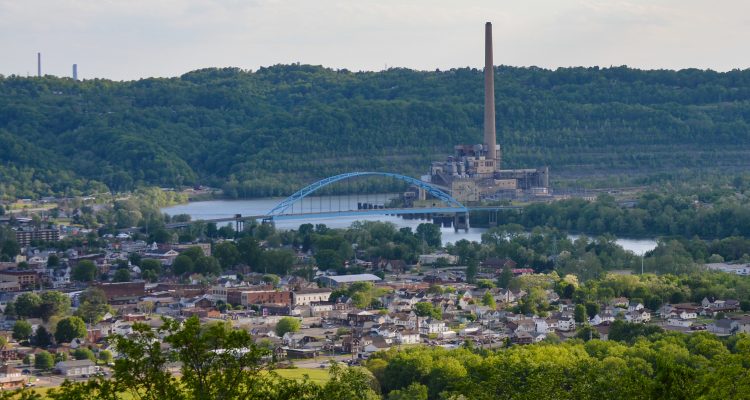(Editor’s Note: This is the first of two reports that will update Weelunk readers on the current status of the proposal to extend U.S. Interstate 68 from the Morgantown area to Moundsville.)
Bob Miller was raised in Marshall County, and since August 1986 he has heard the same tale about the Arch Moore Memorial Bridge and why it is nearly a replica of the Fort Henry Bridge in Wheeling.
Completed and opened in the mid-1950s, the Fort Henry span carries more than 50,000 motorists per day over the Ohio River along Interstate 70, one of the nation’s most popular routes from Baltimore to Utah. The bridge in Marshall County, however, connects Moundsville to East Ohio south of Shadyside, and it is utilized far less than both interstate bridges in Ohio County.
Miller, though, believes the Arch Moore span is what it is because another interstate was supposed to be cut and molded between Morgantown and Moundsville. Seventy-three miles of roadway with a path between Aleppo and Freeport with exit and access points along the way is what the commissioner has been told, and Miller has revived the initiative the old-fashioned way.
He’s been pushing it. Hard.
After traveling to Charleston for the past two regular sessions, Miller gained the attention of a member of the Trump Administration during a quick trip to the nation’s capital in October when representing the Marshall County Commission. Bill Kirkland, deputy director of White House intergovernmental affairs and a special assistant to President Trump, then welcomed Miller to Washington, D.C., in November to continue the conversation about the potential of extending Interstate 68 by more than 70 miles.
“I initially became interested in this project after a retired DOH employee came to the Marshall County Commission and proposed to us that we use some of the new money from the gas and oil industries to begin building this road,” Miller explained. “He repeated the story about the original plan for the interstate and the Moundsville bridge, and he suggested that we build a segment of the project from Moundsville to near Cameron.
“He called it the ‘250 Connector,’ but the number, the cost, that he presented was very low compared to the number that we’ve been hearing these days,” he said. “But, at that time, we didn’t have that new money yet, so we simply thanked him for coming in and educating us about that project. But it did intrigue me because, to get out to Cameron some days, it can take longer than a half an hour, and I could only imagine how such a road could change this county and this area.”
Interstate 68 sits today as a 116-mile-long freeway between I-79 at Morgantown, West Virginia, and I-70 at Hancock, Md,, and it is known to officials of the Federal Highways Administration as, “Appalachian Corridor E.” In October 2003, the federal agency approved the Mountain State’s request to extend I-68 from the Morgantown intersection to through Marshall County.
“But that went away when the recession hit hard,” Miller recalled. “Everything went away then, it seemed, but it made sense then, and I believe it still makes sense, so we’ll see. I can only do what I can do.”
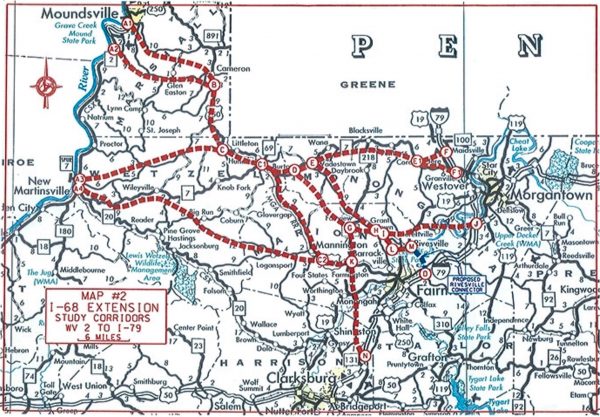
Impact of Law
Residents of the Upper Ohio Valley have heard much about the possible development of an ethane cracker plant, but initially the conversation involved the state of West Virginia and not PTT Global America and Belmont County, Ohio. When lawmakers in Charleston approved the “cracker bill” in 2012, it was aimed at a proposal to construct such a petrochemical facility in Wood County near Parkersburg.
While that project has yet to come to fruition, the investments made by Williams Energy in Marshall County has qualified for the included tax breaks that extend over a 10-year period. To Miller, though, that means the county’s coffers will soon see an influx of “new” revenue.
“The cracker bill covered the new industries coming into the county, and we all know Williams Energy performed a massive expansion in Marshall County,” Miller said. “But the cracker bill allowed the company a 95 percent discount on the property taxes and that’s why the Commission hasn’t seen much from that expansion yet.
“But that’s when the retired DOH employee came back to my mind. His name is John Och, and the idea about the road was something I continued to think about because of how much it would change how our county went about its business,” he continued. “That’s when I started thinking about how we could utilize that money when it did start to come back to the county, and I had some conversations with both federal and state officials about the idea. Everyone thought it was a nice idea, but that’s as far as it went.”
Miller then noticed former Department of Transportation commissioner Paul Mattox had visited the Northern Panhandle nearly three years ago to announce the construction of a new span over the Ohio River from Wellsburg to Brilliant, Ohio. The $131 million bridge will be built by the Flatiron Corp. out of Colorado.
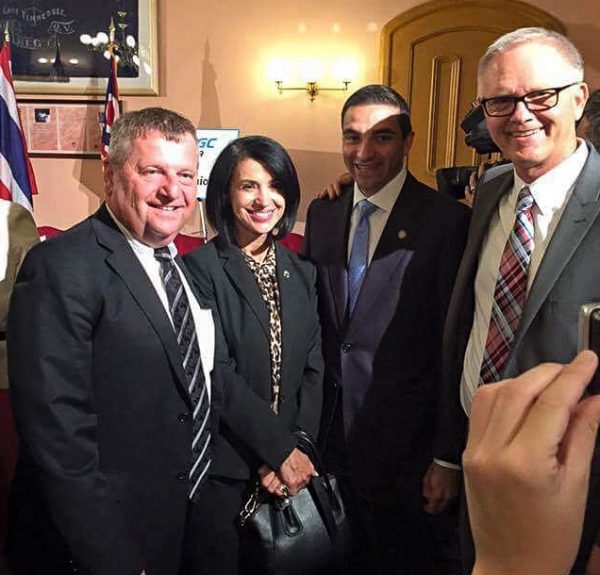
“That’s when I decided to give Paul’s office a call,” Miller said. “I didn’t think I would get to him, but I thought sure I would get to speak to a staff member. But when I was transferred, Paul Mattox answered the phone.”
Without offering Mattox any funding idea, Miller filled him in on his idea.
“That’s when he started telling me about the money that the state didn’t have,” Miller recalled. “But then I shared with him my thoughts about where some of the funds could come from.”
Once Mattox offered some direction to the county commissioner, Miller helped develop Senate Bill 210 and Senate Judicial Resolution 4, both of which concentrated on allowing county commissions to use property taxes for economic development. Without approval, the West Virginia Constitution would continue mandating that the majority of such funds flow toward public education.
“In no way do I intend to take any dollars away from Marshall County Schools,” Miller insisted. “Instead, I am concentrating on the new money the county will see once the cracker bill expires on the massive development that’s taken place in the county.
“Our school system is doing a great job, the new school in Cameron is amazing, and the improvements made at John Marshall High School are great,” he said. “I want those kinds of things to continue because quality education is an important part of a community.”
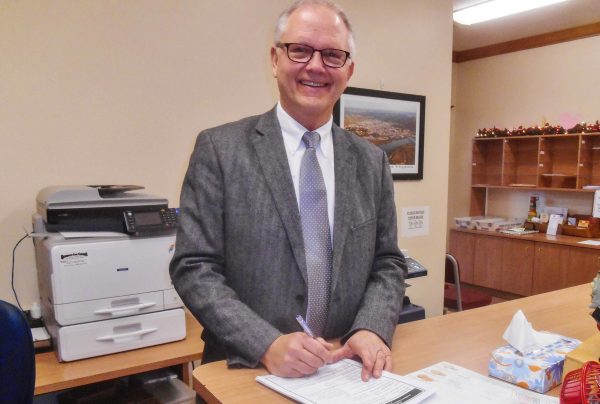
Tough Road to Hoe
Long known as the “Road to Nowhere,” another West Virginia highway, Corridor H, has been planned and partially constructed since 1965, when the U.S. Congress passed the Appalachian Regional Development Act. The plan was for the roadway to swerve and curve 130 miles from Weston in Lewis County to northern Virginia but it has yet to reach its final destination.
The Corridor H project received millions of dollars in federal funding because former U.S. Sen. Robert C. Byrd, who passed away in June 2010, was a force on the Senate Appropriations Committee. Despite environmental concerns because of the roadway’s proximity to trout streams, national forests, wetlands, and abandoned coal mines, construction most recently continued from Tucker to Grant counties, and advocates are pushing for completing the Mountain State portion over the next two years.
Whether or not that happens remains to be seen, and the same can be said about the proposal of Interstate 68 to and through Marshall County. Gus Suwaid serves as the district engineer of District 6 with the state Division of Highways, and his area covers six counties. A veteran with DOH for more than two decades, he has been aware of the initiative.
And he likes it. He really likes it. Suwaid also hopes President Trump likes it.
“As long as the funding can be figured out, I am very much in favor of this project because of the impact it would have in all areas involved,” he said. “I believe it would benefit the residents on both side of the extension and everyone in the middle, too.
“Right now, I believe we have to see where the infrastructure conversation travels next and see what takes place with our federal government,” Suwaid explained. “A billion dollars would not go as far as most people think, believe it or not, but it just might allow this project to move forward at a much quicker pace than it is now.”
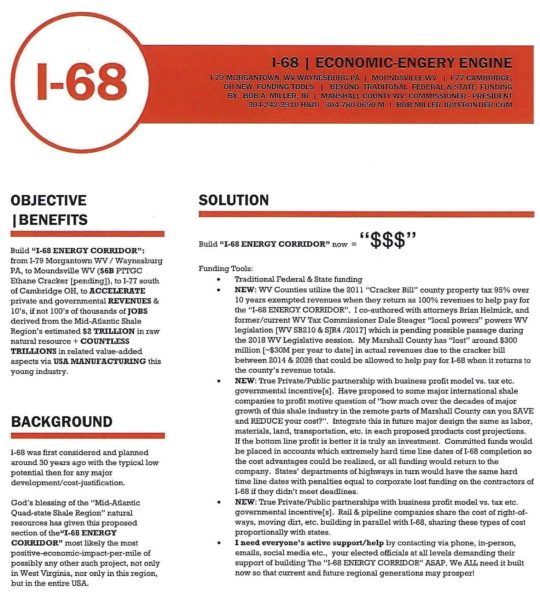
W.Va. Del. Mike Ferro (D-4), who is running for a seat on the Marshall County Commission and could oppose Miller in November, also has heard about the project for years and believes his constituents would benefit from its completion. But when would that be? And at what cost?
“I do believe it would be a very costly project, but I think all of us in this area would like to see that project come to fruition,” said the state lawmaker. “If the Trump Administration agrees to pay 80 percent of it and the state goes in for the other 20 percent, I’d be all for it.
“If it moves forward, I still think it would be 20 or 30 years down the road,” Ferro continued. “I hate to be a naysayer, but it’s a long time coming. Plus, part of what (Miller) has proposed has the counties also paying for the road, and I think that’s up to the county commissioners that would be affected. They will tell you that they are not opposed to an extension of Interstate 68, but they will also tell you that they are against counties paying for it.”
Miller admitted there is no timeframe on the table, and a projection on total cost has yet to be calculated, but he’s not willing to surrender efforts because of the game-changing potential he insists exists.
“I know there are a lot of people who appreciate this project, but they do not appreciate the funding ideas that I have developed,” Miller said. “But when people think about the benefits this road would provide our county, I believe it outweighs those concerns because of the great amount of potential there is for this area right now.
“With the type of industry we have right now, I can envision both white- and blue-collar jobs that would be created all along this road, and I also believe Marshall County could become a bedroom community for the Morgantown area,” he said. “If we expect to keep our kids here, we have to build infrastructure like this. Now, it’s not a project that’s going to happen overnight or even in a decade, but with the flurry of development I believe is going to happen here, I feel it’s something we need to get started.”


